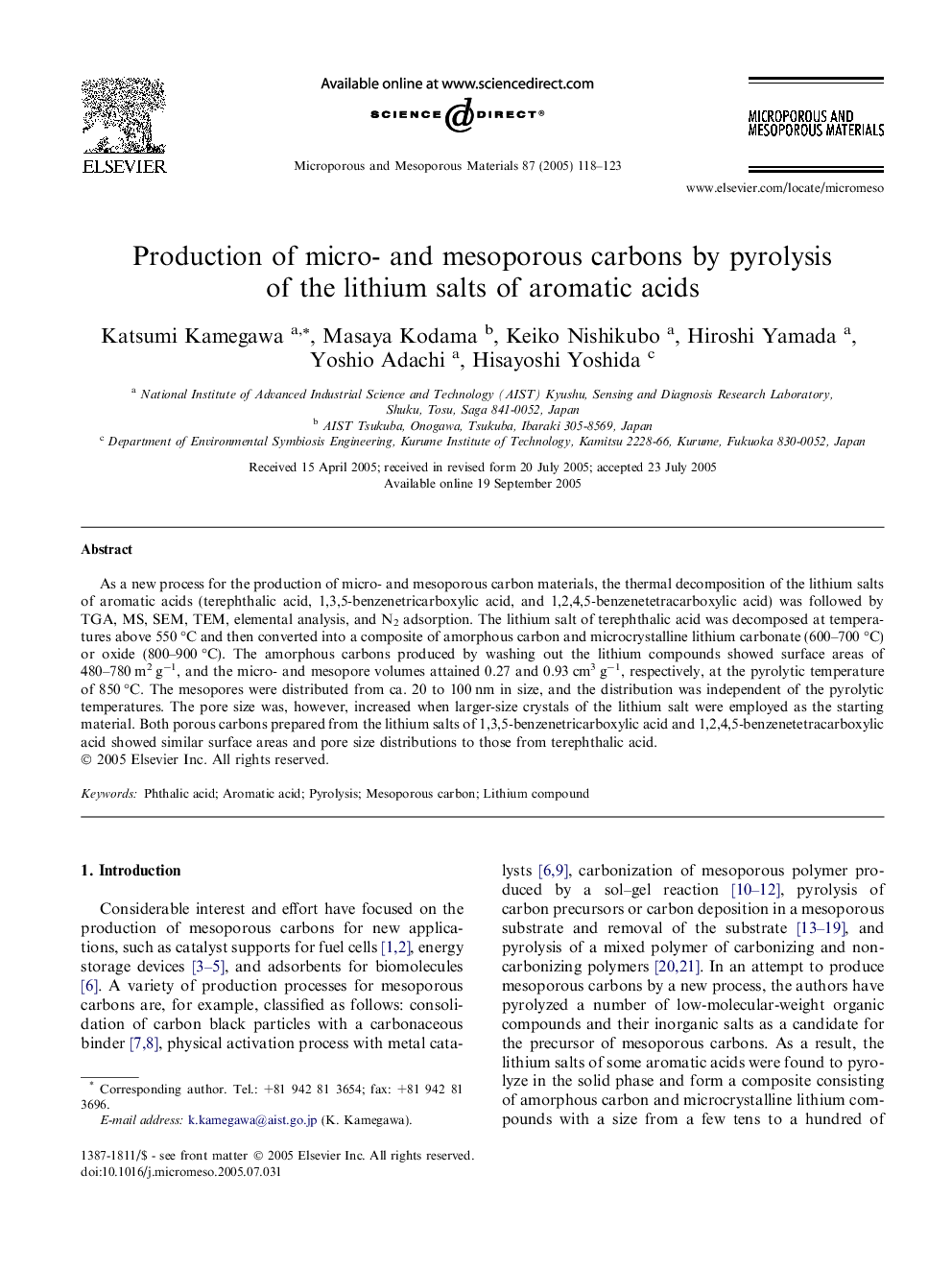| Article ID | Journal | Published Year | Pages | File Type |
|---|---|---|---|---|
| 10247961 | Microporous and Mesoporous Materials | 2005 | 6 Pages |
Abstract
As a new process for the production of micro- and mesoporous carbon materials, the thermal decomposition of the lithium salts of aromatic acids (terephthalic acid, 1,3,5-benzenetricarboxylic acid, and 1,2,4,5-benzenetetracarboxylic acid) was followed by TGA, MS, SEM, TEM, elemental analysis, and N2 adsorption. The lithium salt of terephthalic acid was decomposed at temperatures above 550 °C and then converted into a composite of amorphous carbon and microcrystalline lithium carbonate (600-700 °C) or oxide (800-900 °C). The amorphous carbons produced by washing out the lithium compounds showed surface areas of 480-780 m2 gâ1, and the micro- and mesopore volumes attained 0.27 and 0.93 cm3 gâ1, respectively, at the pyrolytic temperature of 850 °C. The mesopores were distributed from ca. 20 to 100 nm in size, and the distribution was independent of the pyrolytic temperatures. The pore size was, however, increased when larger-size crystals of the lithium salt were employed as the starting material. Both porous carbons prepared from the lithium salts of 1,3,5-benzenetricarboxylic acid and 1,2,4,5-benzenetetracarboxylic acid showed similar surface areas and pore size distributions to those from terephthalic acid.
Related Topics
Physical Sciences and Engineering
Chemical Engineering
Catalysis
Authors
Katsumi Kamegawa, Masaya Kodama, Keiko Nishikubo, Hiroshi Yamada, Yoshio Adachi, Hisayoshi Yoshida,
